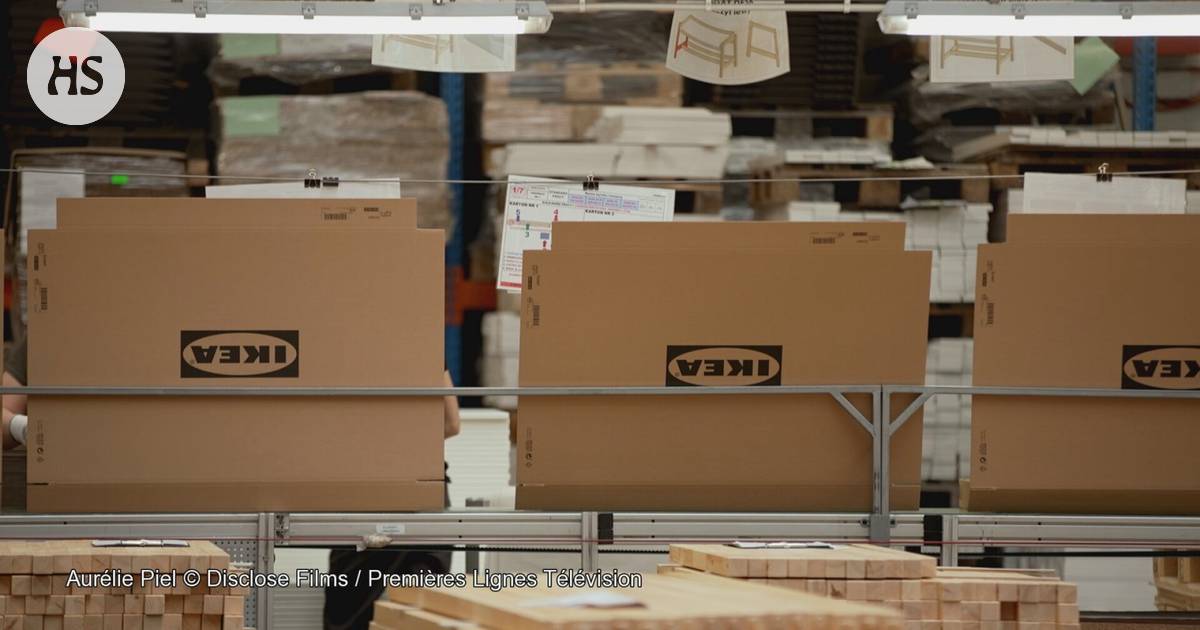Ikea swallows one percent of all the wood that is cut down in the world every year. That means one tree every two seconds.
World the most common piece of furniture probably has a Swedish name.
Ikea’s scandi minimalist handprint can be seen in Finnish, German, Saudi Arabian and Chinese homes as well. One simple line Billy– shelf is sold somewhere in the world every fifth second.
The furniture giant has also left its mark in the forests of the world, and it is far from the serene catalog world, says the French documentary The truth about Ikea (Ikea – The Lord of the Forests, 2024).
Xavier Deleun and by Marianne Kerfriden the direction is based on traditional journalistic narrative and startling images that burn in the mind. Such is, for example, an aerial view of a factory, in the yard of which countless cut tree trunks lie in rows like unrecognizable corpses.
“The Swedish giant consumes 20 million cubic meters of wood every year, one tree every two seconds,” says the narrator’s voice in French as the airplane flies over the piles of wood.
The intemperance of the pace sets itself in front of the eyes.
Ikea factory in eastern Poland.
Document weaves together the growth of Ikea, founded in 1943, with the development of Western consumer culture.
It shows how its founder Ingvar Kampradin led by Ikea shaped consumption and tightened it. The decoration was planned to be a power shopping experience familiar even to today’s customers, where you drive to the Ikea parking lot, eat in the department store’s restaurant, wander around the already decorated sample rooms, load flat cardboard boxes into the back container, drive home and assemble the furniture yourself.
The interviewees are mostly Swedes, so the criticism seems to emanate from within: here we are criticizing a national treasure.
“Ikea is a huge beast,” says someone who previously worked as Kamprad’s assistant Johan Stenebo. He says that in the 1990s, Ikea acquired large quantities of wood from Siberian forests and exported them illegally through China.
Romanian conservationists, on the other hand, accuse Ikea of allowing illegal felling of trees in the forests it owns.
According to Ingvar Kamprad’s former assistant Johan Stenebo, in the 1990s Ikea exported large quantities of wood illegally from Siberia via China.
”
Ikea is the largest private forest owner in Romania.
Ikea has advertised its responsibility and denied accusations of using illegal wood in its production, but did not allow the authors of the documentary to get to know their production chain.
Aerial photos of the forest areas owned by Ikea in Romania show Kolho and the torn terrain. Ikea is the largest private forest owner in Romania.
The researcher who exposed abuses in the country’s forest industry Gabriel Paun says that he was the target of an assassination attempt in 2015, and that poachers and loggers have promised a reward for his head.
Ikea’s silence hums in the ears.
Truth From Ikea relies on the consumption-critical narrative formula familiar from previous sustainability documentaries. Persistent nature and the corporate giant that destroys it, local communities and mass production stand in opposition.
The documentary is repetitive and underlining in places. Once again, the researcher reminds us that four Earths would be required for humanity’s current consumption.
On the screen you can see pine trees rising to the sky, next to them the prices of Ikea products. Can it be more clearly articulated that cheap production has its real price?
There is the familiar undertone of nature conservation shouting into the wind: someone listen now!
In Brazil, pine plantations are gradually displacing native tree species. In the picture, pine trees are felled, some of which end up as Ikea furniture.
Documentary the most surprising features include the examination of the ethics and ecology of emission compensation. Ikea’s tree-planting projects appear mainly as a blanket continuation of the silly ones.
Ikea has bought thousands of hectares of agricultural land in New Zealand, on which it is planting Monterey pine, which does not belong to the local nature. As a fast-growing species, it produces emission credits in a few years, after which the trees can be cut down and used.
Ikea would like to reduce its carbon footprint and at the same time increase its production. Next to the pine plantations that fell in the storm lies the credibility of sustainability speeches.
The truth about Ikea, Yle Areena.
